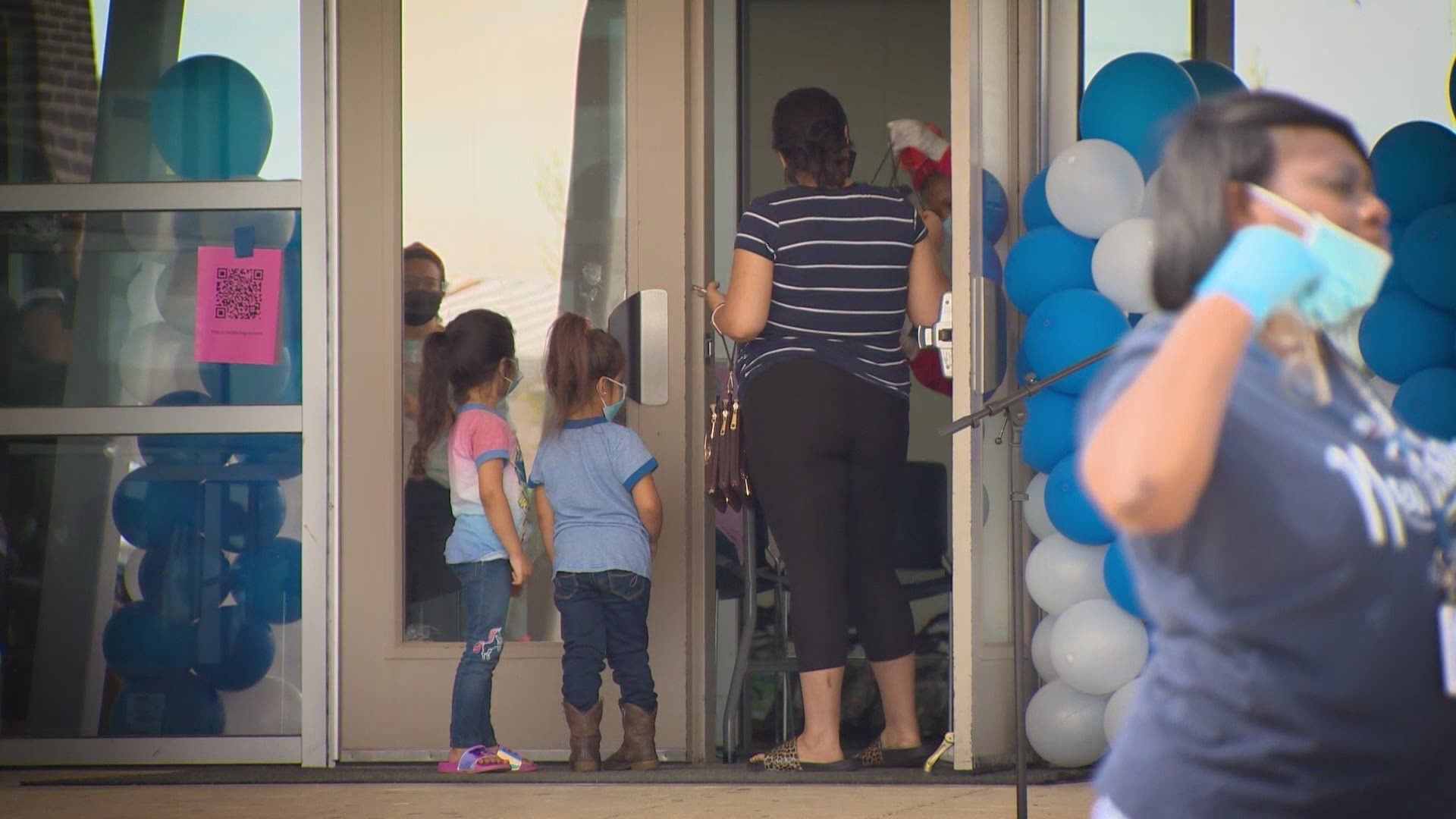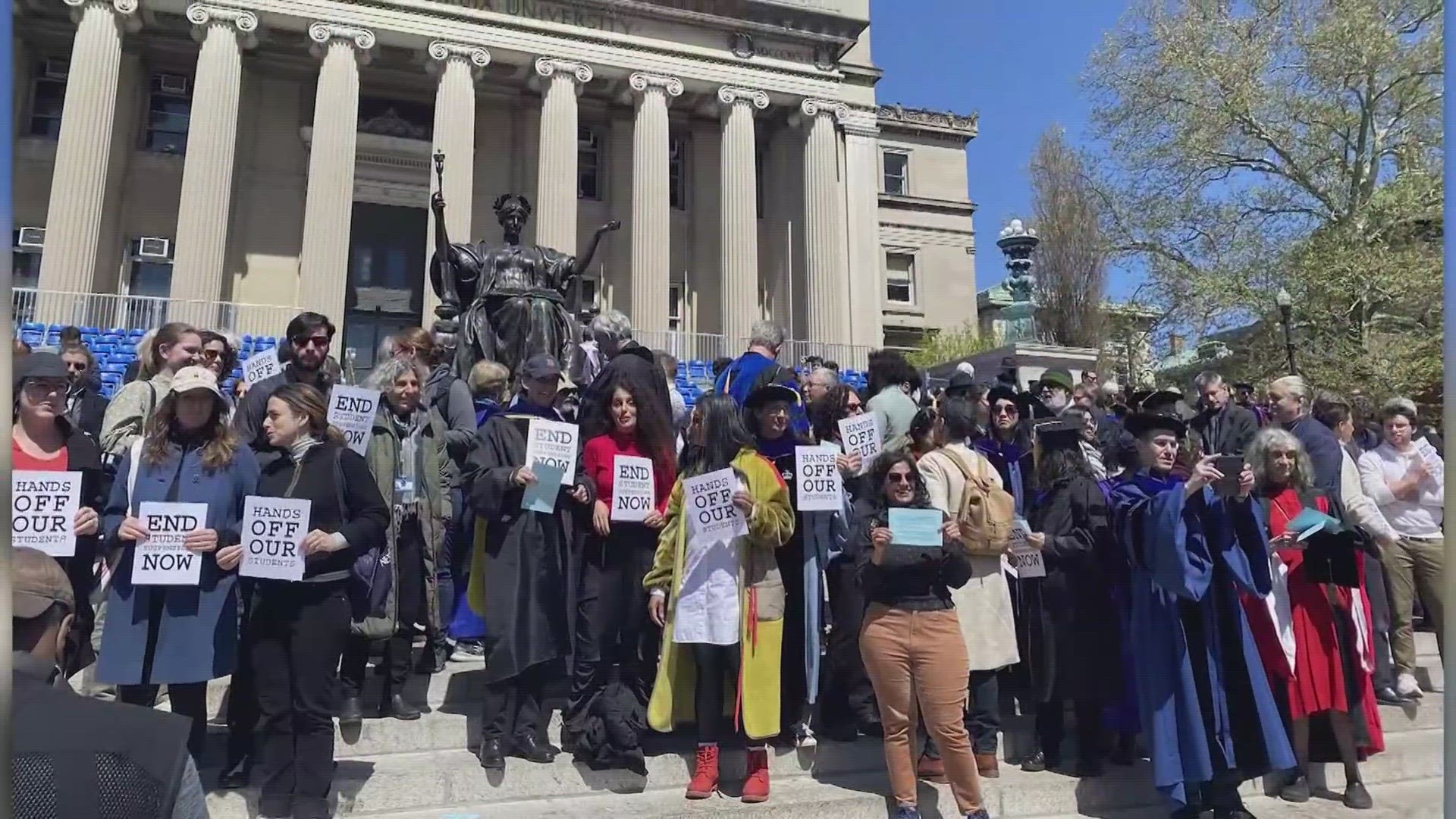DALLAS — As the school year and pandemic continues, districts are left wondering whether their budget will be tied to student attendance due to the fate of a "hold harmless" agreement.
Last year, a “hold harmless” agreement was put into place by the Texas Education Agency to keep funding at pre-pandemic levels.
Overall, attendance across the state is down 3% from October 2019 to October 2020. That equals out to 156,596 fewer students, according to the TEA.
School districts still don’t know if their budgets will be tied to the past school year’s attendance or if the grace period will be extended. That could be the difference between possible budget cuts or keeping funding at the same level.
Districts in North Texas are connecting with wayward students to make sure they stay in school and get the support they need.
In December, 82 Texas lawmakers asked the Texas Education Agency Commissioner Mike Morath to extend the agreement through the rest of the school year.
“Our districts are facing deadlines to make critical decisions regarding their budgets, including consequences to staffing and programs, if the Hold Harmless does not continue,” the letter said.
It was signed by representatives on both sides of the aisle representing North Texas, including Rep. Angie Chen Button, Rep. Nicole Collier, and Rep. Jeff Leach.
Attendance in North Texas
In North Texas, Community ISD says their absences are down this year with students able to attend online.
Prosper ISD has a more than 98% attendance rate and says administrators are actively involved with students who have excessive absences.
Frisco ISD has more students enrolled on Feb. 1, 2021 compared to late August, but it has not grown at the rate anticipated prior to COVID-19.
Irving ISD is down 623 students in 2021 (32,651) compared to January 2020 (33,274). The highest decline in enrollment was in pre-K students.
Statewide, enrollment of early education and pre-K students has been lower with a 22% drop for each of those grade levels in October 2020 compared to October 2019, the TEA said. Enrollment in these grades is optional.
The letter also mentioned the learning loss due to COVID-19 and schools will need intervention strategies and support.
“Potential reductions in staff, programs and services due to loss of funding if the Hold Harmless is not extended will have a direct impact on some of the most vulnerable students and will have a long-lasting negative effect on their educational attainment,” the letter said.
This week, the Texas House Democratic Caucus hosted a press conference to call attention to the issue.
“Now, that provision has expired and neither the governor, nor the Texas Education Agency, has decided whether they will continue that provision,” said Rep. John Bucy. “Our schools stand to lose millions of dollars should we not extend hold-harmless."
Engaging with struggling students
Districts are stepping up to engage with students who haven’t logged in or have attendance issues.
The campus operations teams at Irving ISD regularly make home visits to determine what the need is and how the family can be supported through their “Home Visit Blitz.”
In January, volunteers at Duncanville ISD checked in on students who have a large number of absences or were failing multiple courses.
Data shows some students are still having trouble adjusting to a virtual learning environment. Some students are not staying as engaged as schools would like.
Starting this week, Dallas ISD is looking for 9,000 high school students and 2,000 middle and elementary school students through a month-long program called Operation Comeback. The doorknocks will start on Saturday where district staff members will do contactless home visits.
The program will also give families information on how to get meals, hotspots or uniforms and how to track their child’s attendance and grades.
Districts across the state have bought those necessary items, like technology devices and food, for students throughout the pandemic as classes turned virtual.
If funds were to remain tied to attendance, districts may have to go into rainy day funds, which are often used in an emergency. It's happened in the past when districts were damaged by tornadoes or hurricanes. Budgets have been tighter with the pandemic.
The president of the Texas State Teachers Association said that the governor and the legislature need to do more.
He said that they must increase funding levels because the needs of educators are greater than ever as a result of the pandemic. He suggested lawmakers tap into the $11.6 billion rainy day fund.
“For starters, the state must keep all our districts fully funded, at last year’s levels, for the remainder of the spring semester, regardless of attendance losses over which districts have little control during a health emergency,” President Ovidia Molina said in a statement.




